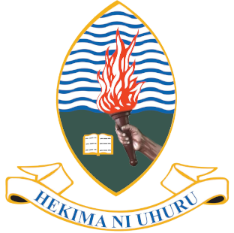
LYDIA GASPARE
Lecturer, School Of Aquatic Sciences And Fisheries Technology
Education:
BSc. General (Marine biology and Chemistry), MSc. in Aquatic Sciences(Dar) Ph.D. (Norwegian University of Life Sciences, Aas, Norway)
Teaching:
Fish processing Technology; Fish population dynamics and stock assessment.
Research:
- Tropical small scale fisheries dynamics and management
- The role of fishers’ knowledge in Fisheries management
- Fish population and stock assessment
- Effectiveness of marine protected areas
- Assessment of marine litter and its impacts on coastal ecosystems
Projects:
- Samaki: Fisheries, nutrition, livelihoods, gender and rights in Tanzania. NORHED II
- Assessing the biodiversity of eels (Anguillidae and Congridae) of Tanzania: Promoting Sustainable Fisheries and Habitat Protection through Environmental Monitoring and Capacity Building (BIOEELS-TZ)”. GIZ
- Billfish Interactions, Livelihoods, and Linkages for Fisheries sustainability in the Western Indian Ocean (BILLFISH - WIO)” WIOMSA-MASMA
Publications:
- Gaspare, L. Levels and distribution of Polycyclic Aromatic Hydrocarbons in interstitial water, surface sediments and oysters from the intertidal areas of Dar es Salaam, Tanzania. MSc. Thesis, University of Dar es Salaam. 2007
- Gaspare, L. Linking ecological and social elements to sustain coral reef fisheries: A case of groupers [Epinephelidae] in Mafia Island, Tanzania”. PhD thesis, Norwegian University of Life Sciences. 2016
- Gaspare, L., Machiwa, J. F., Mdachi, S. J. M., Streck, G., & Brack, W. (2009). Polycyclic aromatic hydrocarbon (PAH) contamination of surface sediments and oysters from the inter-tidal areas of Dar es Salaam, Tanzania. Environmental Pollution, 157(1), 24-34.
- Gaspare, L., & Bryceson, I. (2013). Reproductive biology and fishery-related characteristics of the Malabar Grouper (Epinephelus malabaricus) caught in the coastal waters of Mafia Island, Tanzania. Journal of Marine Biology, 2013.
- Gaspare, L., Bryceson, I., & Mgaya, Y. D. (2015). Temporal and spatial trends in size, biomass and abundance of groupers (Epinephelinae) in Mafia Island Marine Park: fishers’ perceptions and underwater visual census surveys. Fisheries Management and Ecology, 22(4), 337-348.
- Gaspare, L., Bryceson, I., & Kulindwa, K. (2015). Complementarity of fishers' traditional ecological knowledge and conventional science: Contributions to the management of groupers (Epinephelinae) fisheries around Mafia Island, Tanzania. Ocean and Coastal Management, 114, 88-101.
- Mwijage, A., Lyasenga, T. J., Shilla, D. J., Mahugija, J. A. M., Gaspare, L., Mfilinge, P. L., & Shilla, D. A. (2021). Diet and isotopic niche dimensions of predatory fish in two estuaries with different degrees of anthropogenic disturbances: a case study of Wami and Pangani Tanzanian coastal estuaries. Advances in Oceanography and Limnology, 12(2).
- Kadagi NI, Wambiji N, Mann B, Parker D, Daly R, Thoya P, Rato DA, Halafo J, Gaspare L, Sweke EA, Ahmed S. Status and challenges for sustainable billfish fisheries in the Western Indian Ocean. Reviews in fish biology and fisheries. 2022 Sep 23:1-27.

